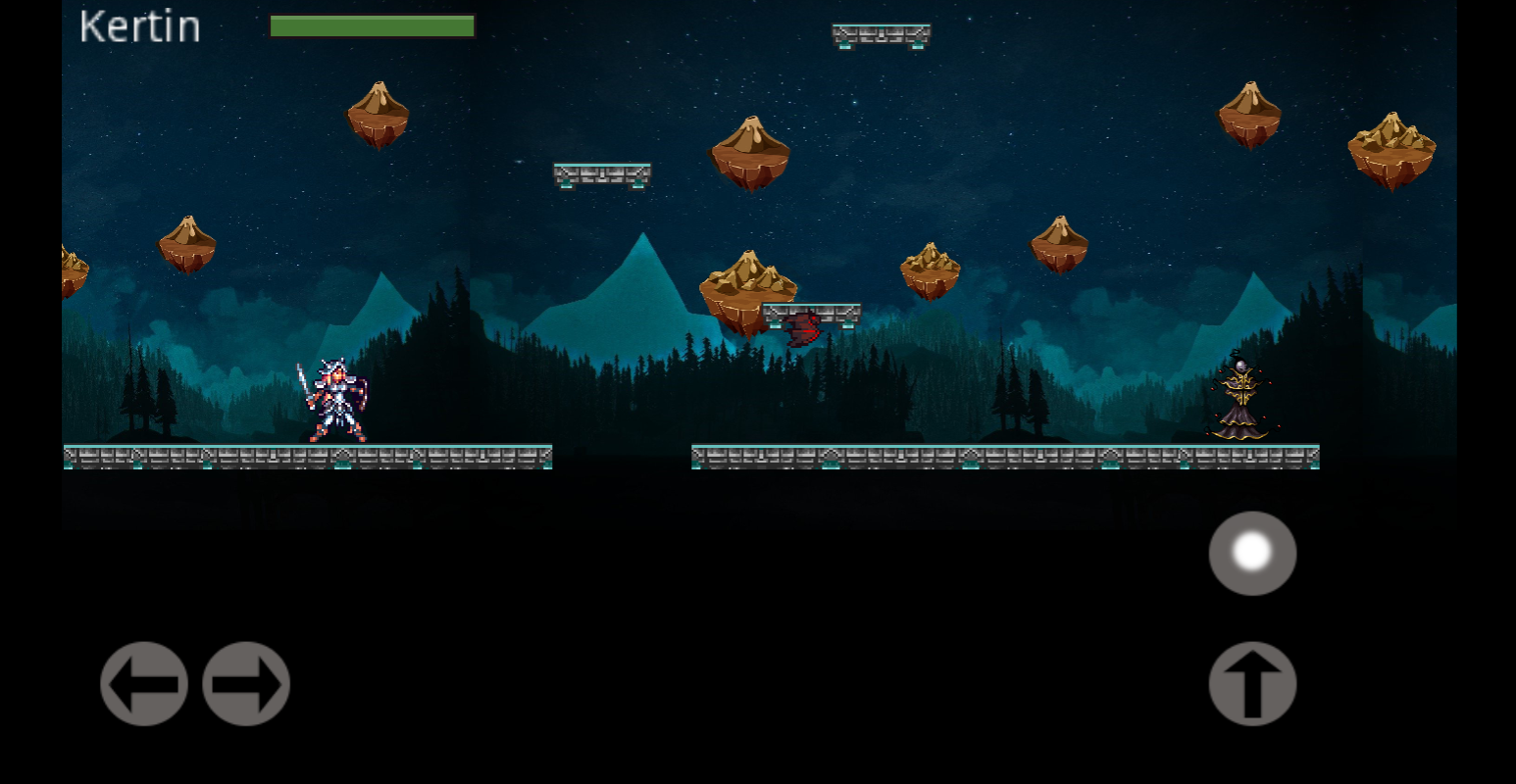Kerstin's Fate developer diary
Kertin's Fate developer diary
Kertin's Fate Design:
The gameplay design for the game is based on the GNS model. Although GNS is based on role gaming, I decided to use the modes concept to direct design goals. The goal by ussing GNS is to "Focus on a gamism experience while narrating the game". Whit this goal, the game is not intended to advocate for simulationism, however things would change during testing.
Moreover, for general gameplay I decided to stick with some common gameplay patterns.
The game is designed by the following game play design patterns:
- Value of effort
- Luck
- Revoke Roles
- Character Levels
- Critical Failure
- Critical Success
- Items
- Gameplay Mastery
- Time Limits
On the other hand, to design character development I divided the experience according to the MDA framework, focusing mechanics as methods/actions.
Mechanics:
- Jump/ double jump
- Sword attack
- Attack with Item
- Use item(Live, update sword, etc)
- Run
- Move
- Get Points
Aesthetics/ Feelings that I want the player to feel
- Feel to kill enemies
- Feel the effort to kill the enemies
- get experience
- feel and get power
- completion of the level(Feel completion)
- Winning aginst bosses.
Dynamics:
- by killing an enemy the player gets points.
- bu getting points the player receives experience
- by moving and completing the level the player gets more information about the story(Remember the N on GNS).
- by getting an item, the player could upgrade items or character's stats. The the player could feel powerfull against enemies
By taking this descriptions I created level scketches.
Level 1:
Design:
The first level is divided in 5 sections with challenges related to each other.
the first section contains 3 enemie bats which are handled by a patrolling algorithm , they damage the player whenever they touch it. The only way one could kill then is by hitting them with a sword.
The second section contains 5 enemies , could have the same class or characteristics, but they must have 3 states each one: idle , patroll and seek. The first two states are managed by timing events while the seek one is controlled by a radio between the enemies and the player character. Moreover, each enemy must die after 3 hits.
The third section is designed to be a free fall platform( based on the same aesthetics as the first Bayonetta game free fall introduction level ). While the player stands in the platform , the environment imitates the sensation of falling, meanwhile enemies appear , incrementing by time.
Enemies appear according to the following function: The first time that the player gets into the platform one enemy appears. After the first enemy is killed, three enemies appear. Finally, after those three enemies are killed, five more appear. When the last enemies are killed, the platform lands in the beggining of the fourth section.
The fourth section contains three spike areas. Skipes reduce a significant portion of the life of the player whenever ther are touched by the main character. Moreover, the last area contains skipes that jump every 0.5 seconds , so the player must syncronize its movements to jump over them.
The last section was made for a boss battle, with different patterns of attacks. In the implementation I designed five patterns for the boss , so it behaves as a state machine.
Implementation :
The first level was a real challenge since we needed to curate sprites, fonts , tiles and music between the members involved in the development. As for this part I have to share credit with the guys who joined in this crazy project.





Comments
Post a Comment